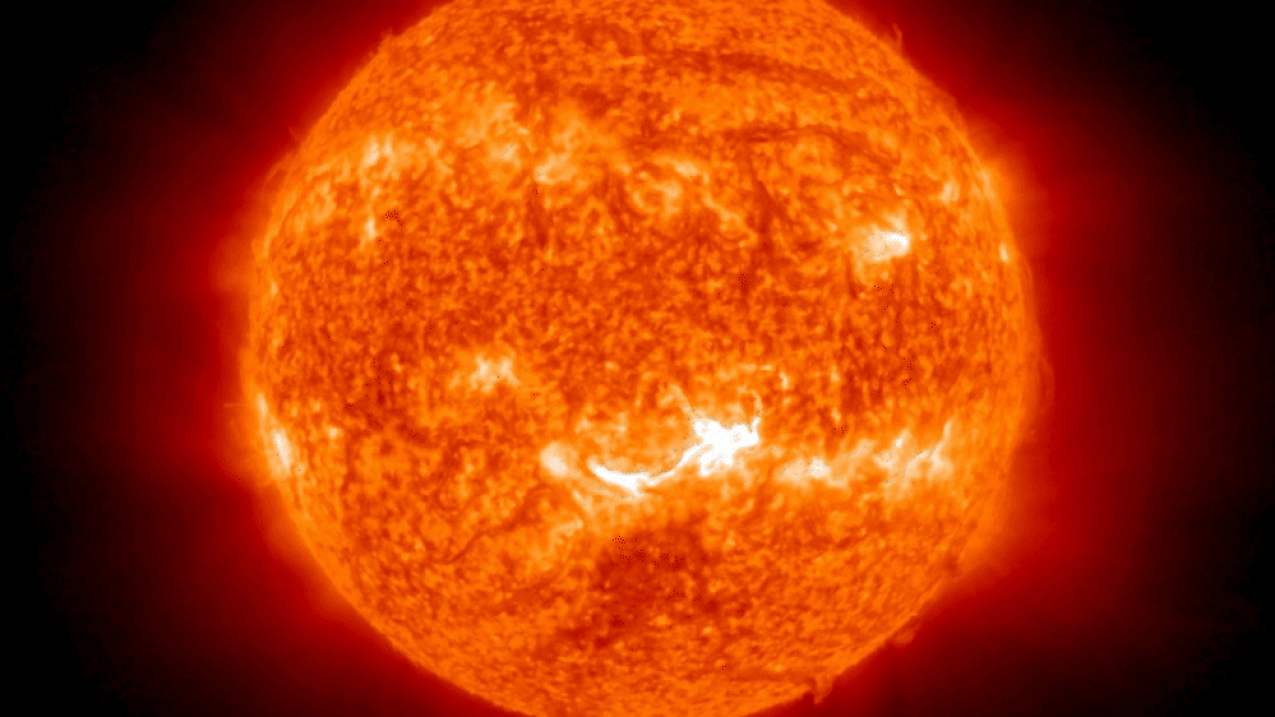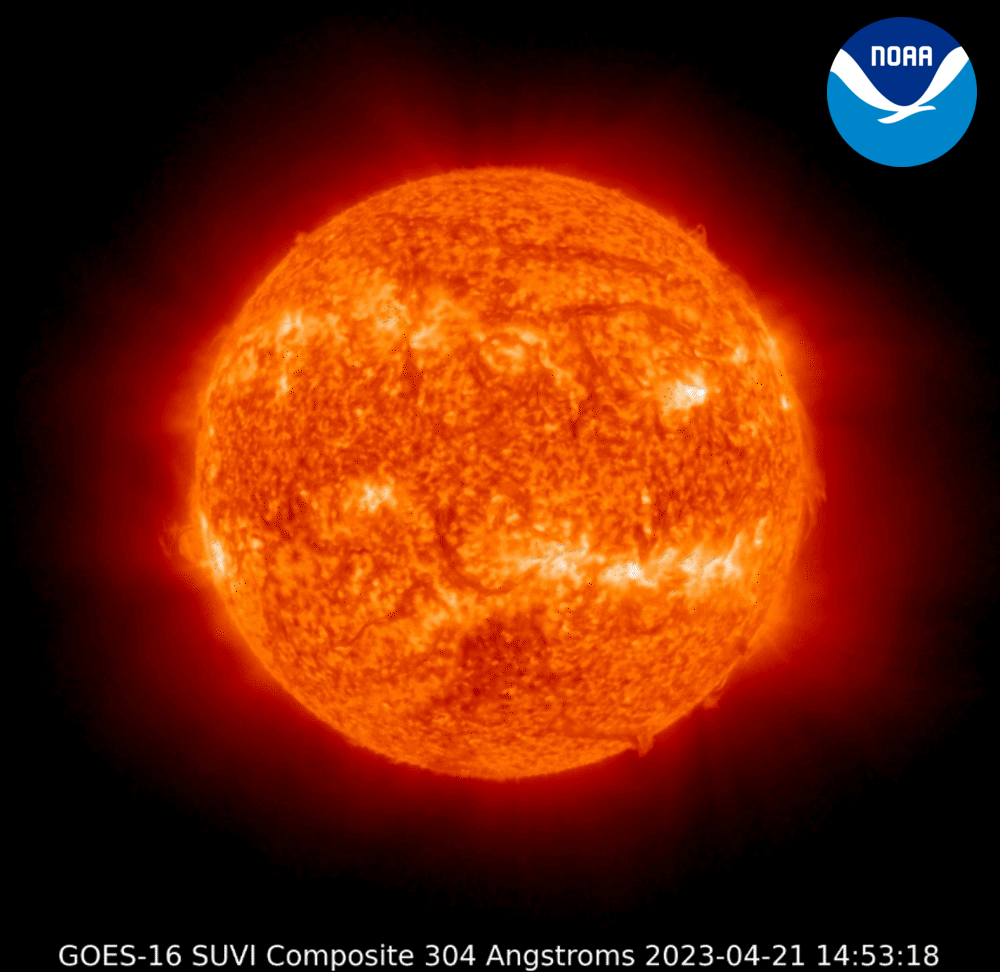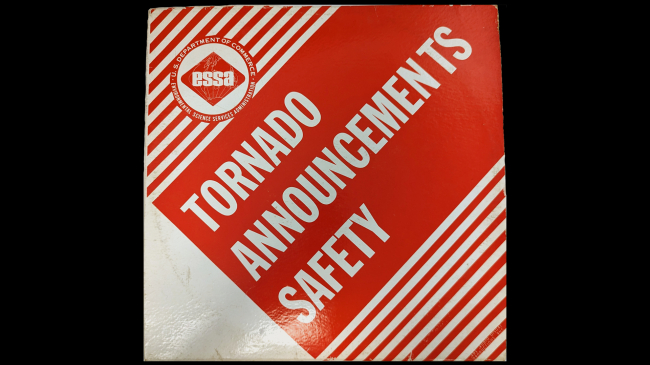NOAA space weather experts available for interviews

NOAA forecasters observed a severe geomagnetic storm (G4) on Earth April 23. The G4 storm was caused by a filament eruption on the sun associated with a solar flare. The event was captured by the Solar Ultraviolet Imager on NOAA’s GOES-16 satellite at 2:12 p.m. EDT April 21, 2023. (Image credit: NOAA)
NOAA’s Space Weather Prediction Center — a division of the National Weather Service — is monitoring a severe geomagnetic storm generated by a coronal mass ejection (CME) that erupted from the sun on April 21. NOAA forecasters issued several warnings for the geomagnetic storm over the weekend and provided decision support to customers so they could minimize impacts.
Ejected plasma from the eruption traveled at nearly two million miles per hour toward Earth, with NOAA observing the arrival of a severe geomagnetic storm (level 4 out of 5 on NOAA’s space weather G- scale) at 3:26 p.m. EDT on April 23. Geomagnetic storm conditions continued overnight. A watch for a moderate geomagnetic storm (G2) is in effect today.

“This increased activity from the sun is consistent with the current state and timing of the solar cycle,” said Rob Steenburgh, NOAA space scientist. “Energetic events like solar flares and coronal mass ejections have become more frequent in the past year, and especially in the past month, and we expect activity to continue ramping up to the peak next year.”
Severe geomagnetic storms can disturb the electrical grid, but power operators take precautions in response to NOAA warnings and alerts. Spacecraft in low Earth-orbit may experience increased drag leading to tracking problems. Position and navigation using satellite signals like GPS may be disrupted, primarily in the polar regions, but the impact can extend into mid-latitudes. HF (high frequency) radio communications can also be disturbed, and depending on the magnitude of the storm, the impacts can last for days. High-frequency radio disruptions can hinder the work of airlines, emergency managers, radio amateurs and others.
Geomagnetic storms also create spectacular aurora on Earth. The aurora from this event may be visible as far south as Alabama and northern California, according to NOAA’s Aurora Forecast. Aurora is best viewed in areas without light pollution and no cloud cover.
This is the third severe geomagnetic storm (G4) since Solar Cycle 25 began in 2019. The other storms took place on November 4, 2021 and March 24, 2023. Forecasters observed the elevated solar winds measurement for these events using NOAA’s DSCOVR spacecraft, which informed the geomagnetic storm forecasts.
WHAT
- Space weather experts available for interviews about the geomagnetic storm and impacts on Earth
BOOKING
- For interviews, contact Maureen O’Leary, NOAA Communications, at maureen.oleary@noaa.gov
NOAA's Space Weather Prediction Center is the official source for space weather forecasts, watches, warnings and alerts. Visit www.spaceweather.gov for updates.
Media contact
Maureen O’Leary, maureen.oleary@noaa.gov



